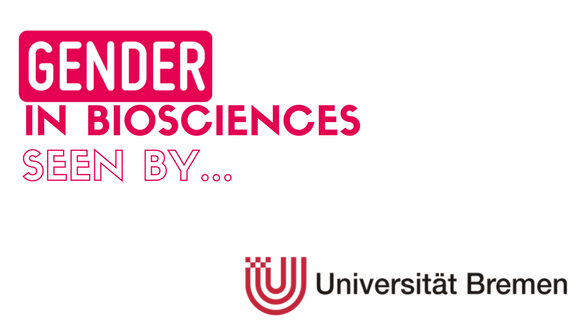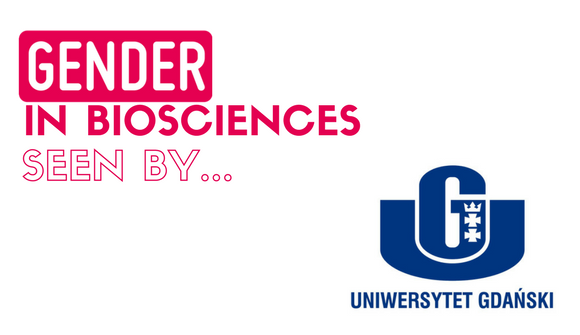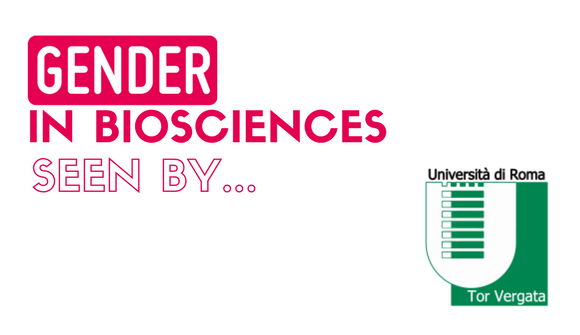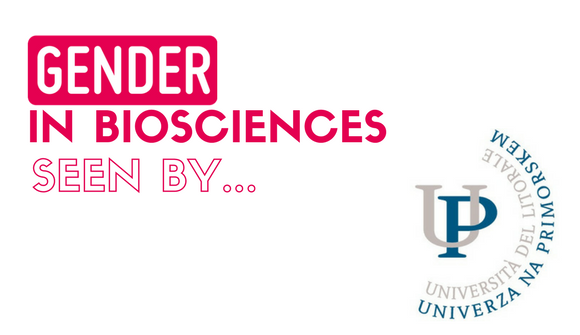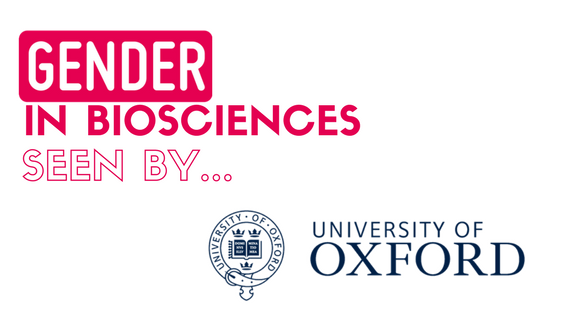How do you understand Gender in biosciences research? Women are under-represented in research generally, and in STEM occupations specifically. The explanations for these patterns vary from discrimination of women and “glass-ceiling” effects, to implications of gender differences in household and family, and to modern men and women making different choices due to different life values and life priorities. Historically, natural science has been perceived as a male domain. Today, gender in biology study programs is balanced up to and including the doctoral level (see Figure 1 – the proportion of men and women in Faculty 02 Biology and Chemistry at the University of Bremen). The critical point is the retention of women in and after the postdoctoral career level. In average, in academic biosciences in Germany only 15 per cent of Professors are female. The “leak” of women from the science pipeline means a regrettable waste of expertise. Gender diversity enriches scientific enquiry, promotes excellence, and opens the horizon for societal contextualized questions and research. What are the current standards and actions to achieve better Gender in the University of Bremen? The Action Plan of Science 2020 of the Senator of Science and Research of the Federal State of Bremen states the need of cultivating a more gender-balanced environment at the institutions of higher education. Gender inequality in scientific careers undermines the principles of fairness, equality of opportunity and social justice. Therefore, structural principles to cover gender-political measurements are in the core of the recently launched Diversity Strategy of the …
Gender in Biosciences research in the University of Gdansk
How do you understand “gender” in Biosciences research? Our focus on gender is intersectional as it overlaps with other important roles women and men undertake: The gender of the researcher: it is important to bear in mind the number of male and female staff at the Intercollegiate Faculty of Biotechnology UG & MUG (IFB) and of different obstacles to their research careers that might result from gender stereotypes that influence the concepts of what men/women should and shouldn’t do. The gender of the student: we are aware of IFB being a faculty with a majority of women, so we know it is good to design the teaching programmes in such a way as to attract also more male students and give equal chances for both genders. The gender and the management level in institutions: it is necessary to highlight that gender stereotypes have a strong impact on leadership structure, so we understand the meaning of tailored training in leadership skills. The gender and role-models: in our opinion well promoted roles models of both male and female scientists encourage researchers to take up new tasks and that work-life balance has a positive effect on facilitating gender equality in institutions. What are the current standarts and actions to achieve better gender equality in Gdansk University and in Poland in general? The University of Gdańsk has experience in introducing the standards of gender equality policy promoted by the EU. Researchers take part in projects financed by external funders which focus on implementing gender …
Gender in Biosciences, seen by the University of Tor Vergata, Italy
Elena Bachiddu – Member of the Department of Biology at the University of Rome “Tor Vergata”. She works in communication, event organization and on the website of the Department. She is a cultural anthropologist and teaches ‘Health and Safety at Work’ for “Didactics of Science” courses, the theoretical-practical modules annually organized by the Department to promote and disseminate scientific knowledge among students of first and second grade schools. Elena Bachiddu is also a member of the Central Advocacy and Control Committee (CUG-Comitato Unico di Garanzia), where she coordinated Work-Life Balance seminars and publications. 1. How do you understand “Gender” in biosciences research? Broadly based and explored in the field of Gender Studies theory, the discourse on ‘gender difference’ is emerging nowadays in Italy in the biomedical disciplines where it is understood as closely related to the guidelines of personalized medicine and no longer as limited to the sphere of reproductive health of woman. Consequently, Gender Medicine, starting from research and biomedical experimentation and pre-clinical studies, appears as an area that currently recognizes and examines the sex and the feminine difference. In this sense research and experimentation approaches are oriented within several pharmacological research projects and research institutes, training of medical specializations, hospitalization procedures in the local healthcare facilities and healthcare policies. However, in general terms, we must remember that, according to the Global Gender Gap Report presented at the World Economic Forum, Italy still ranks 50th as for women participation in the labor market and for economic opportunities, and in particular according …
Gender in Biosciences, seen by the University of Primorska, Slovenia
Dr. Elena Buzan – is Head of department for Biodiversity and coordinator of study programme Biodiversity and Nature Conservation at Faculty of Mathematics, Natural Sciences and Information Technologie at University of Primorska. She is also responsible for the societal engagement of UP, for the technology transfer and regulation of policy regarding intellectual property, for promoting gender equality, and for the importance of Open access and ethic knowledge in the bioresearch. 1. How do you understand “Gender” in biosciences research? I think gender issue is one of the crucial point to solve in Biosciences. Our role as researchers is to limit gender biased messaging. Women should not feel discouraged from pursuing a career in the Biosciences simply because they don’t fit a pre-determined model. A better integration of women after they finished their PhD can only improve science, as with more diversity comes more creative ideas and effective solutions. We need to stop enforcing stereotypical roles and give better support to women with families (especially small children) to continue their scientific carrier. 2. What are the current standards and actions to achieve better Gender equality in Primorska University and in Slovenia in general? Gender equality in Slovenia is slightly above the EU average, according to the EU Gender Equality Index. In spite of progress over time, there are still challenges ahead. Indicators measuring labour activity showed better results for men than for women. Women are poorly represented in the decision-making positions in employee and employer organizations. Slovenia has a fairly generous framework governing women’s sexual …
Advancing gender equality through the Athena SWAN Charter for Women in Science
Article written by Pavel Ovseiko, Alison Chappell, Laurel Edmunds and Sue Ziebland – Oxford University Health Policy Research and Systems;15(1):12. doi: 10.1186/s12961-017-0177-9. Background All UK universities have been encouraged to take Gender Equality very seriously and instigate many different approaches to improve circumstances for women in science. It is promoted and assessed by a high profile organisation – Athena SWAN which is part of the Equity Challenge Unit (http://www.ecu.ac.uk/equality-charters/athena-swan/). In 2011, the UK Chief Medical Officer was so dismayed at the lack of women in academic medicine, especially in leadership positions, that she sent a letter to all UK medical schools stating that their funding from the National Institute for Health Research (for their associated Biomedical Research Centres, BRCs, and funding generally) could be at risk if they had not achieved Silver award status. Not surprisingly medical schools and all scientific research establishments across the UK did a lot more to address Gender Equity, and still do. Despite the wide-spread implementation of the Athena SWAN Charter, there has been very little qualitative evaluation of its impact. Oxford continues to be very successful with regards to Athena SWAN and funding of the NIHR Oxford Biomedical Research Centre (BRC). There is still work to be done with respect to Gender Equity here, but we have already achieved a lot; for example 16 departments of the Medical Sciences Division (MSD) also integral to the NIHR Oxford BRC, have Silver awards. All this experience of Athena SWAN in turn provided a context for us …
Gender in Biosciences, seen by Oxford University
Dr. Laurel Edmunds – is a Senior Research Fellow working in collaboration with the NIHR Oxford BRC and relevant researchers across the University of Oxford. She is currently leading on a series of systematic reviews evaluating women in academic medicine and research efficacy in the NIHR Oxford BRC. 1. How do you understand Gender in biosciences research? Gender is of growing importance in bioscience research for two main reasons. First, women should not be disadvantaged or treated differently in the workplace just because they are women. Second, as more and more women are going into scientific careers, they are bringing new perspectives and alternative approaches. We cannot afford to lose these resources from the biosciences. 2. What are the current standards and actions to achieve better Gender in your University and in your country? Since 2008 we have had the Athena SWAN Charter for improving gender equality in sciences in the UK. Higher education institutions sign up to the Charter and then apply for an award (either Bronze, Silver, Gold) and complete applications with supporting evidence, and submit these to the Athena SWAN organisation. Bronze requires an assessment of gender equality, a 4-year action plan and an organisational structure that can deliver the plan; Silver is awarded when a department has delivered and shown an impact from these actions; Gold these are maintained and the department supports others. Few science departments hold a gold award as they are difficult to get and keep. There is now a similar Charter …




